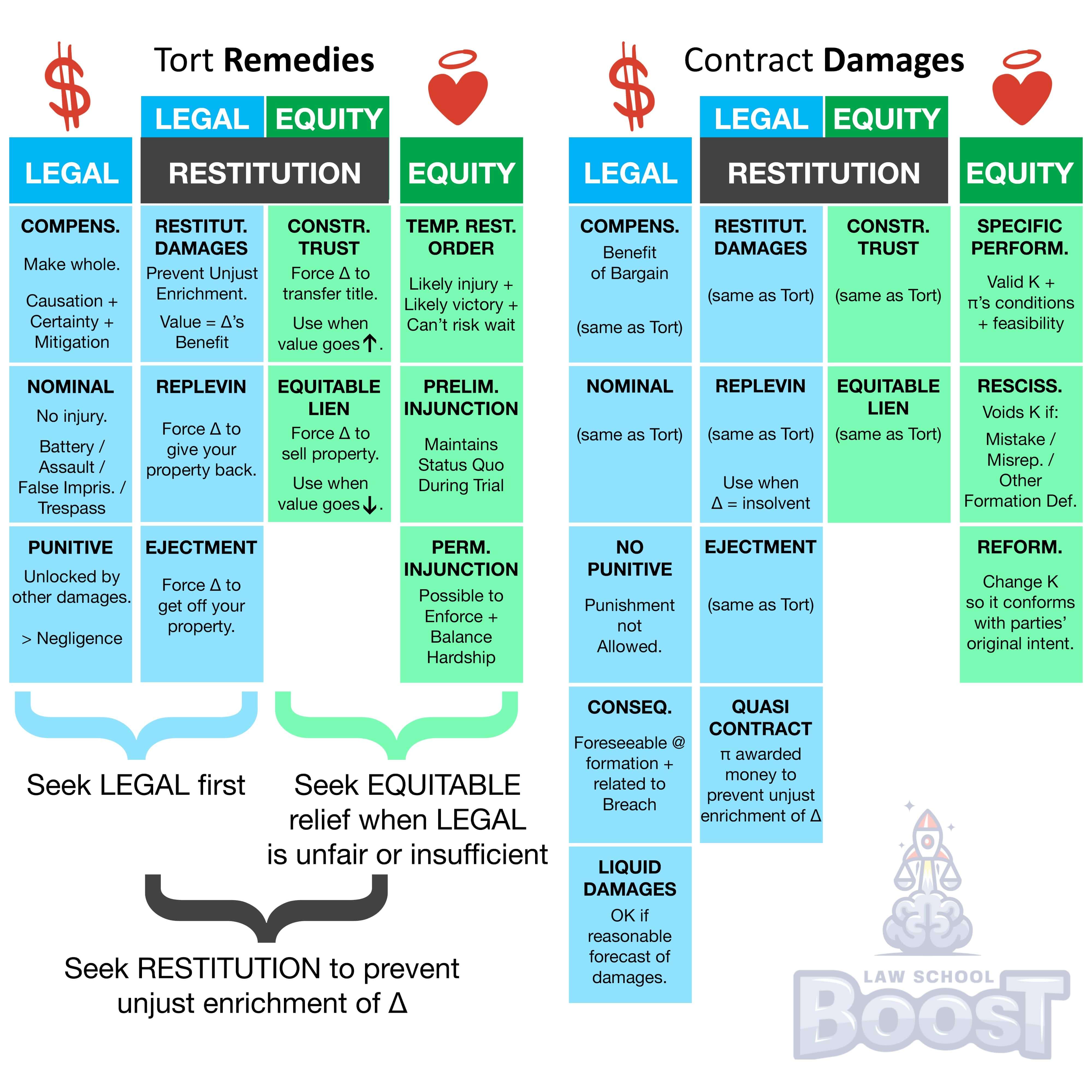🏥
Remedies • Tort - Legal Remedies
REM#008
Legal Definition
General damages are non-economic losses, such as pain and suffering and permanent disfigurement, the basic certainty rules do not apply (a jury may award any amount it wishes, subject to proper instructions).
Plain English Explanation
The payout for general damages is less clear than special damages, as they're damages you can't easily put a price on since they are so subjective. Because general damages are based on the negative experience inflicted on—and experienced by—the victim, you don't have to provide reasonable certainty about the cost of damages. In other words, if someone breaks your $30 vase and you say, "I want $30 to replace my vase," this is an example of special damages where a court will want to be reasonably certain your vase actually costs $30. In contrast, if someone breaks your nose and you say, "I want $3,000 to replace my nose and compensate me for the pain," this is a more subjective issue that deals with more than picking out a new nose from a catalog. A jury can award any amount of damages it wants, limited only by the court's instructions to the jury.
Hypothetical
Hypo 1: Sam is a model specializing in high fashion and loves his job. On his way to his job for New York Fashion Week, Sam is struck by Bob who was negligently driving while livestreaming videos of models walking by. In the aftermath, Sam suffers permanent disfigurement to his face, which is both his moneymaker and his pride and joy. Result: Sam has a case for both general and special damages. In the case of general damages, Sam doesn't have to provide any evidence to support the certainty of his claims; he can just take the stand and testify to what he's lost because of his disfigurement and the jury has the right to award any amount of money they decide.
Hypo 2: Amy is a surgeon. She works late nights at the hospital. To help battle her anxiety, she keeps a stress ball near her while performing surgeries. It helps keep her calm. Unfortunately, while taking out Jill's appendix, the stress ball rolls inside the open incision. Amy didn't notice. Now, whenever Jill walks around, she can feel the ball bouncing around her organs. Gross. She decides to sue Amy for medical malpractice. Result: Jill can sue Amy for loss of enjoyment of life, which falls under general damages. To win that case, she just has to show that having the stress ball bouncing around in her is making her life much worse and the jury can award damages. No receipts necessary!
Hypo 2: Amy is a surgeon. She works late nights at the hospital. To help battle her anxiety, she keeps a stress ball near her while performing surgeries. It helps keep her calm. Unfortunately, while taking out Jill's appendix, the stress ball rolls inside the open incision. Amy didn't notice. Now, whenever Jill walks around, she can feel the ball bouncing around her organs. Gross. She decides to sue Amy for medical malpractice. Result: Jill can sue Amy for loss of enjoyment of life, which falls under general damages. To win that case, she just has to show that having the stress ball bouncing around in her is making her life much worse and the jury can award damages. No receipts necessary!
Visual Aids

Related Concepts
In assessing compensatory damages for legal remedies in tort, how important is certainty and how is it assessed?
In assessing compensatory damages for legal remedies in tort, how must the judgment be paid?
In assessing compensatory damages for legal remedies in tort, what are special damages?
In assessing compensatory damages for legal remedies in tort, what is foreseeability?
In assessing compensatory damages for legal remedies in tort, what is unavoidability?
In assessing compensatory damages, what is causation?
In assessing legal remedies in tort, what are compensatory damages?
What are legal remedies in tort?
What are nominal damages for legal remedies in tort and what suits are they applicable to?
What are punitive damages for legal remedies in tort, how can a plaintiff get them, and what are their limitations?


